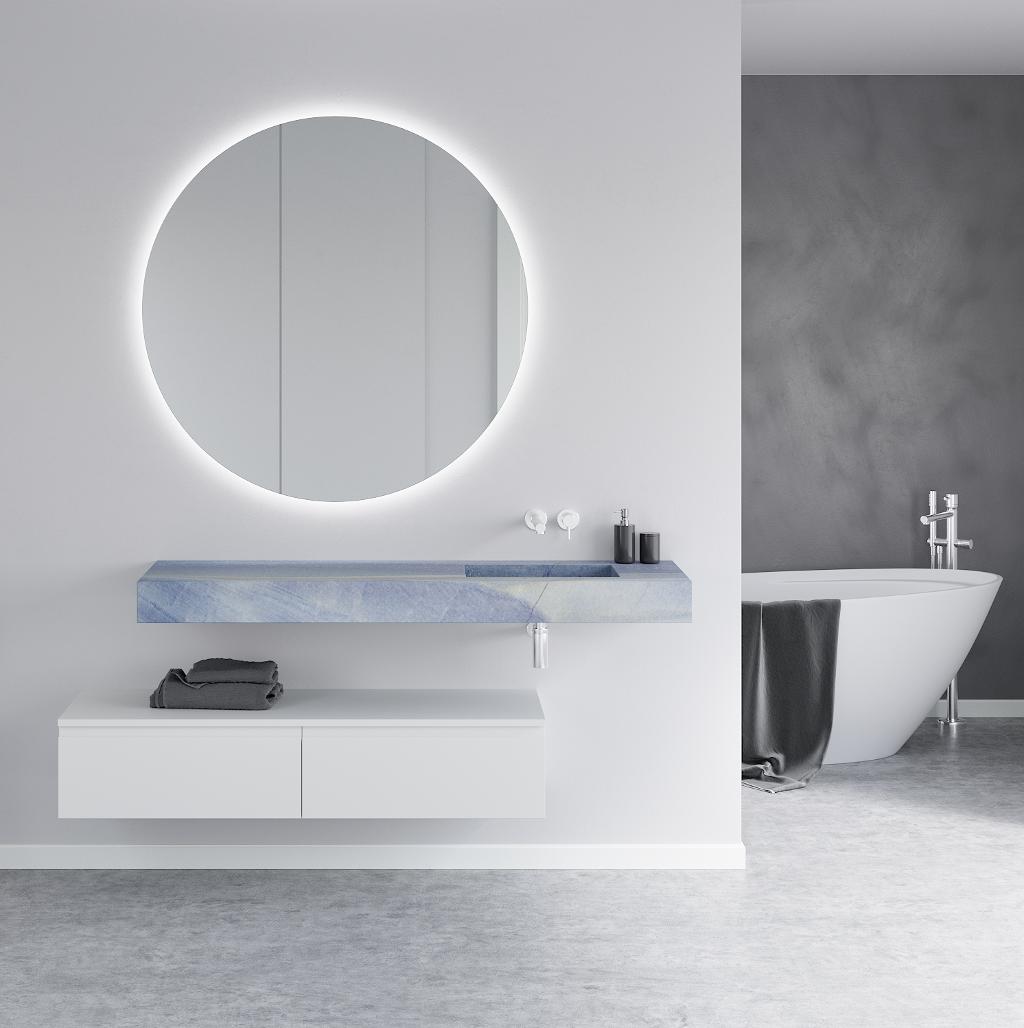
Blue Macauba: Better than Marble?
If you’ve been keeping your eye on the Riluxa catalogue, like the eager luxury bathroom beavers we know you are, you can’t have failed to notice the appearance of a rather sumptuous range of Blue Macauba washbasins in our marble collection: the Seattle single washbasin, the Seattle double washbasin and the Archiproducts Design Awards nominated broad, trough-style single washbasin, the Georgia.
Stunningly beautiful, light blue, pieces that allude to interior design’s opulent past while simultaneously oozing minimalist neo-futurist style, the Blue Macauba range is as fine an example as you’ll see of contemporary marble bathroom design. Except, guess what…
It’s not actually marble.
No, whilst Blue Macauba (otherwise known as Azul Macaúbas) is commonly listed by companies like ours as marble (because that, after all, is what customers type when they’re searching for it), the truth is, the material you’re looking at is actually quartzite.
And guess what else. No, that doesn’t mean we’ve pulled the wool over your eyes to sell you a cheap imitation. Quite the opposite, in fact. Because, whilst quartzite is every bit as beautiful as marble (in this case, maybe even more so), it’s actually a superior material. So you might say we’re doing ourselves a disservice by pandering to the common misnomer.
So wait, what is quartzite?
The difference between marble and quartzite is that marble starts out as a type of limestone whereas quartzite is formed when the grains of quartz found in sandstone are fused under extreme pressure and heat.
In real usage terms, what this means is that marble has relatively weak chemical bonds in comparison to quartzite. Pour acid on marble and it will fizz; pour it on quartzite and it won’t. So, whilst marble still works beautifully in the bathroom (arguably less well in the kitchen without regular sealant treatment), quartzite is a much tougher material that is far more resistant to chemical and physical weathering. Giving you that extra sense of security in its performance.
Where does Blue Macauba come from?
A unique quartzite, veined with lavish shades of blue and auburn, all the Blue Macauba available commercially in the world is sourced from a single quarry in Bahia, Brazil. The only other place you’ll find it is in South Africa, and only in certain regions, but there are no quarries there. The reason for this scarcity is that its rich blue colour comes from a very rare mineral called dumortierite, which can only be found in those places, making it a precious material.
Of course, because Blue Macauba has become so highly sought after, some companies have started selling blue materials that are similar in appearance but very different in their technical characteristics and do not have the same value as genuine Blue Macaubas. However, because we define luxury here at Riluxa as a combination of design, build quality and material excellence, you can rest assured that our Blue Macaubas range is the real thing.
Take a look at our article that examines the environmental impact of marble quarrying